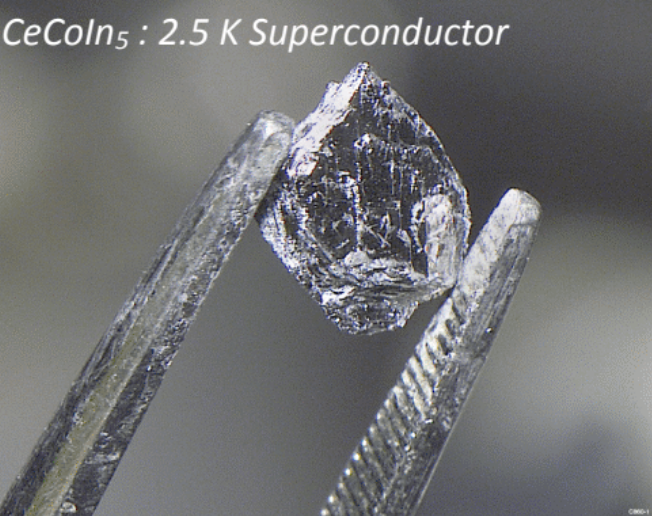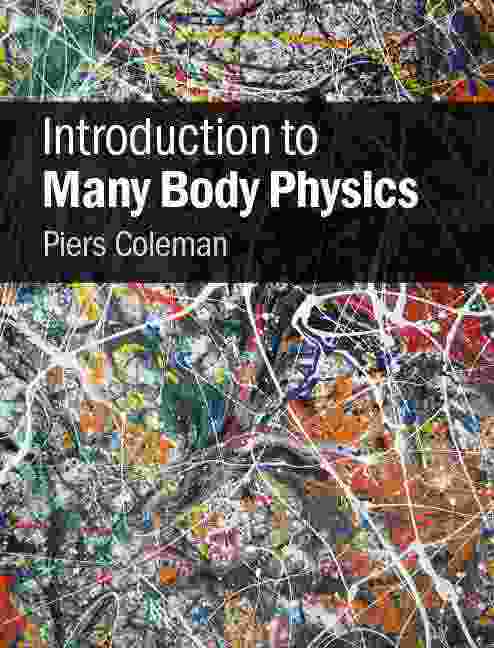8/23/18
Advanced Topics in Condensed Matter
Strongly Correlation and entanglement in
Quantum Matter
681 Fall 2019
PLEASE REGISTER
| Images | Texts |
Exercises |
Times of Course |
Syllabus outline |
Timetable |
 |
|
Magic Angle Graphene |
Illustrating the Effective Action in Path Integral |
Relationship between Meissner Effect and Phase Rigidity of a Superconductor. |
Gap Structure of a d-wave superconductor |
 |
|
Phase Diagram of the Kondo Effect |
CeCoIn5: a 115 Superconductor |
Instructor: Piers Coleman, Room 268
If you have any questions about this course or the
homework, please do not hesitate to contact me via email
at : coleman@physics.rutgers.edu
Scope of Course. This course will provide a
selected introduction to strongly correlated electron
systems. There will be a lot of discussion and
interaction. The course will begin with a
discussion of broken symmetry and
superconductivity. We will then shift to a new
topic: Magic Angle Graphene, discussing the recent
developments in this field and the Bistritzer-Macdonald
picture of these materials. We will end with a
local moment formation, the Kondo Lattice and the physics
of heavy fermion materials and quantum
criticality. The course will be based in part on the
last seven chapters of my book, "Introduction to Many-Body
Physics" and on a recent series of lectures at the 2019
ICAM Cargese School on emergent
physics of quantum materials.
 |
The reference texts will be ``Introduction to Many-Body Physics'', Piers Coleman, (CUP, Jan 2016). Chapters 12-18. |
-
Here are some additional useful references:
- Condensed Matter Field Theory by Alexander Altland and Ben Simons.(CUP, 2006)
- Advanced Solid State Physics by Philip Phillips, second edition (CUP, 2012).
- Basic Notions in Condensed Matter Physics by P. W. Anderson, Benjamin Cummings 1984. A classic reference. Many of us still turn to this book for inspiration, and philosophy. It also has a fine selection of important reprints at the back.
-
Quantum Field Theory in Condensed Matter Phyiscs, A. M. Tsvelik, Cambridge University Press, 2nd edition (2003).
- R. Shankar, Rev Mod Phys 66 129 (1994). An amazingly self-contained review of the renormalization group and functional integral techniques written by one of the best expositors of condensed matter physics.
- ``Field Theories of Condensed Matter Physics'' by E. Fradkin. (Frontiers in Physics, Addison Wesley). Interesting material on the fractional statistics and the fractional quantum Hall effect.
- ``Methods of Quantum Field Theory in Statistical Physics'' by Abrikosov, Gorkov and Dzyalozinskii. (Dover Paperback) - Classic text from the sixties, known usually as AGD.
- ``A guide to Feynman Diagrams in the
Many-Body problem by R. D. Mattuck. A light
introduction to the subject. Reprinted by Dover.
- ``Greens functions for Solid State Physics'' S.Doniach and E. H. Sondheimer. Not as thorough as AGD, but less threatening and somehow more manageable. Frontiers in Physics series no 44.
- ``Quantum Many Particle Systems'' by J. W. Negele and H. Orland. Alas all the good physics is in the unsolved exercises! However, it is the only one of this set to touch on the subject of functional integrals.
- The Theory of Quantum Liquids by D. Pines and P. Nozieres. Excellent introduction to Fermi liquid theory that avoids the use of field theory.
- Statistical Physics, vol II by Lifshitz and Pitaevskii. Pergammon. Marvellous book on applications of many body physics, mainly to condensed matter physics.
Traditional Many Body Theory and Greens Functions
Further references:
Some
Online references (Check it out- this is a great
link).
Exercises 681 (Return to top)
Exercise 1
(Return to top)
Times: 3.20 pm on Monday and 3.20 pm on Monday in ARC 108. We will start on Weds Sep 5. Occasionally, to make up for my travel, we will hold an additional class, on Friday 12.30-1.40pm, SEC 206.
Office hour: Officially: 9.50am Fridays but come by if you have questions. Tel x 9033.
Assessment: I anticipate four or five take home exercises and one take-home final. I want to encourage an interactive class and will take this into account when grading!
(Return to top)
Outline Here is the provisional outline.
- Functional Integral Approach to interacting electron
systems
- Superconductivity, particularly Anisotropic pairing and superfluid He-3.
(Return to top)
Schedule:
Week |
Mon 3.20-4.40 ARC 108 |
Weds 3.20-4.40 Arc 108 |
Extra class Time: 12.00-1.20pm Place: SEC 206 |
1.Sep 2-6 |
5th
Sept 1.40 ARC 108 First Class of Semester Introduction and early history superconductivity |
||
2 Sep 9-13 |
London's
arguments Coherent states Ginzburg Landau Theory. |
Flux
Quanta and Type II Superconductors |
Extra
Class? |
3 Sep 16-20 |
BCS
Tool Box I |
BCS
Tool Box II |
|
4 Sep 23-27 |
No Class | No
Class |
|
5 Sept 30-Oct 4 |
Retardation and anisotropic pairing: BCS theory with momentum dependent coupling. | Anisotropic
pairing: superfluid He-3A and B |
|
6 Oct 7-11 |
|||
7. Oct 14-18 |
Starting Magic Angle Graphene around now | ||
8. Oct 21-25 |
|||
9. Oct 28-Nov 1 |
|||
10. Nov 4-8 |
No
Class |
||
11. Nov 11-15 |
|||
12. Nov 18-22 |
No
Class |
||
13. Nov 25-29 |
No Class Thanksgiving |
||
14. Dec 2-6 |
|||
15. Dec 9-13 |
Last
Day of Classes |
||
(Return to top)